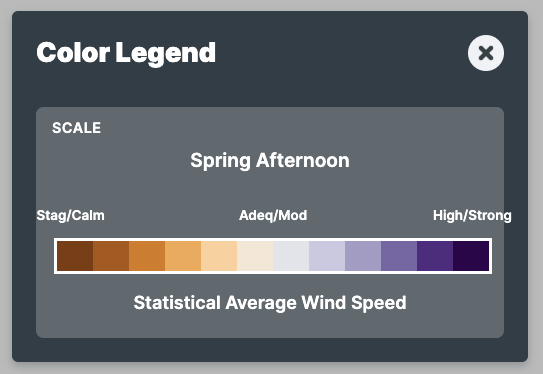What is Wind Cooling Potential?
Wind Cooling Potential is a metric that provides the average wind speed of a location at an indicated time. It is generally understood that wind reduces the perceived temperature people experience in a given location. In the summer, a nice breeze on a hot day acts as a cooling agent. However, in the winter wind cooling, also known as wind chill, can be detrimental as it tends to make a location feel colder.
How is Wind Cooling Potential Measured?

Wind cooling potential is measured by calculating the average local wind speed at a given location over the given period of the year. Unlike the Pedestrian Level Wind Comfort Metrics which gauge wind speeds on more extreme days (80th, 90th, and 95th percentiles) in order to ensure that spaces are mostly within acceptable bounds, Wind Cooling Potential considers speeds on an average day, the wind’s statistical average over the given period of the year. The higher the cooling potential, the more the wind will act to cool the area, potentially making it feel uncomfortable on colder days. The lower the cooling potential, the lower the wind chill (on colder days) or the more stagnant the conditions (on warmer days).
Why can we not use Pedestrian Comfort Metrics for this?
Because Pedestrian Wind Comfort Metrics gauge wind speeds on more extreme days (80th, 90th, and 95th percentiles), they require a larger dataset to generate statistically valid information. Since Wind Cooling Potential uses the average, it is statistically safer to slice the data into smaller bins (eg summer mornings) such that they can be evaluated against the thermal comfort for the same periods.